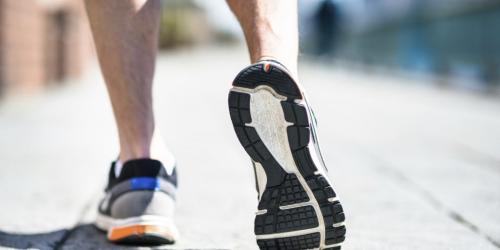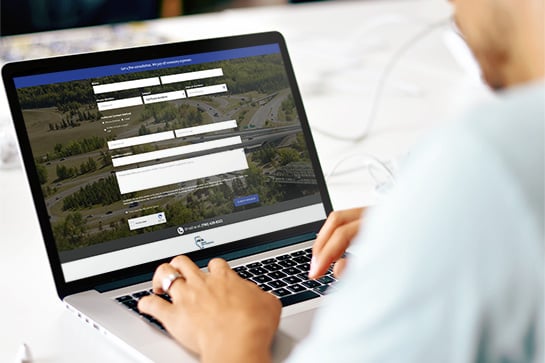You’re out for a quick jog before work. It’s early and summer traffic is light, you decide to cut across a normally busy Edmonton street. Just like that—and out of nowhere—a car swerves into your path, missing you by centimetres.
Even if the above scenario has never happened to you, it’s increasingly possible in our fast-paced world. Even pedestrians who stay within the crosswalk may feel unsafe amid a sea of drivers who feel tired, distracted, or entitled to ignore the rules of the road.
Be proactive about preventing accidents; take time to refresh your memory and learn more about drivers’ and pedestrians’ basic responsibilities to each other.
Basic Drivers’ Rules
If it’s been a while since you took a driver’s test, you may have forgotten some of the rules. Here are a few reminders:
- Drive at or below the posted speed limit especially if you are driving through a residential neighbourhood or high pedestrian traffic area.
- Follow common courtesy when overtaking another vehicle, always passing on the left side.
- Use caution in school zones (particularly between 8 – 9:30 a.m., 11:30 a.m. – 1:30 p.m., and 3 – 4:30 p.m.). Even if it’s summer time, remember that children use school playgrounds all year round.
- Never pass another vehicle while in a school zone or if pavement markings prohibit passing.
- Always use your vehicle’s turn signals when turning or passing and remember to shoulder check before starting your turn.
- Make clear hand signals (according to prescribed methods) if turn signals don’t work correctly.
- Follow pavement markings and road signs carefully.
- Use extra caution when reversing your vehicle, paying special heed to blind spots.
- Stop well behind marked white lines just ahead of stop signs and crosswalks.
- While at a stop, yield to passing traffic and pedestrians.
- When approaching a traffic circle, yield to traffic that travels to your left.
- Stop at railway crossings when directed by crossing gates, signals, and other audible or visual cues.
Yield to Pedestrians When:
- A person (or persons) enters a crosswalk in front of (or adjacent to) your vehicle.
- Pedestrians are crossing the roadway in front of the car ahead of you.
- At any instance where you should exercise due care for a pedestrian’s safety.
In other circumstances, drivers have the right of way. The only exception is when directed otherwise by a traffic officer.
When in doubt
Remember that the Traffic Safety Act mandates yielding to pedestrians the majority of the time. You may be fined over $500 and ticketed if you fail to yield to a pedestrian.
Basic Pedestrians’ Rules
Pedestrians and drivers both have the responsibility of lawfully sharing the road. Each party should do their part in keeping everyone as safe as possible, but the danger is usually greater for those on foot. Following are some of the most important tips to remember to stay safe as a pedestrian.
- Wait your turn – When attempting to cross the street, always wait until traffic has come to a complete stop. Don’t try to rush or cut corners when deciding to cross as you’ll put yourself in more danger.
- Check every path – When crossing the street, make sure you look in every direction where cars could pass. Depending on the intersection, cars could be coming from a perpendicular street, turning from the adjacent lane or turning from a lane on the opposite side of the road.
- Always use crosswalks – Being a pedestrian is dangerous enough, don’t put yourself in unnecessary situations by not using a designated crosswalk. You are more likely to be considered at fault should an accident occur, and you can be ticketed and charged for crossing incorrectly.
- Use pedestrian crossing signals – Pedestrian crossing signals are provided to help you make safe and informed choices when walking across the street. They are also available to help drivers know when to yield to provide the best road experience for all parties.
- Communicate – Being a safe pedestrian isn’t just about how you make decisions on the road. It also involves making decisions with the drivers you encounter. If you come in contact with a driver whom you need to pass, try to look through the windows and make eye contact. This will make it easier for you both to decide what steps to take. When communicating, use mutually intelligible signals so that you avoid miscommunication.
- Don’t engage in distractions – When walking, you may be tempted to stay entertained by your phone or drown out the sounds of loud vehicles. Instead, you should refrain from using any gadgets or other devices that may take your attention off of the road.
- Stand out – Make sure you are easily noticed when walking in order to give drivers the chance to spot you well in advance. Wear bright colors such as red, yellow or white. If necessary, wear reflective gear along your clothing. This comes in handy especially at dusk, night or during cloudy weather.
- Be considerate – Just like you expect drivers to consider your needs, you must extend the same courtesy. When crossing lanes, try to move quickly. Allow cars to turn when coming from buildings or parking lots.
- Realize drivers are human – Cars are not driven by robots or computers, so you must take into account that no driver is perfect. You or those you’ve accompanied likely make mistakes behind the wheel as well, so you can’t expect other drivers to abide by all of the traffic laws. Even for those that try their best to follow rules, accidents can still occur.
If You’re Hurt in a Car-Pedestrian Accident
Sometimes accidents occur even when drivers and pedestrians travel carefully. The sun may create a glare that keeps a driver from seeing clearly—or a medical episode may cause either the driver or pedestrian to create an accident.
Regardless of the reason, accidents require quick action. First, get prompt medical attention. Family members may need to act on the victim’s behalf if the injury is severe. In some cases, the accident may require legal intervention. If so, call an accident lawyer to take care of the details.
The next time you go out on the town, either as a pedestrian or a driver, pay attention to the rules of the road, reduce your risk for accidents, and enjoy the journey.
Good Decisions are Based on Full Information
Involved in a car accident? It’s always a good idea to get legal advice about your rights and obligations. Most personal injury lawyers, including CAM LLP, provide an initial free consult. Getting full information leads to better decisions.
Note: This blog post was originally published in August 2016 and has since been updated with relevant content

